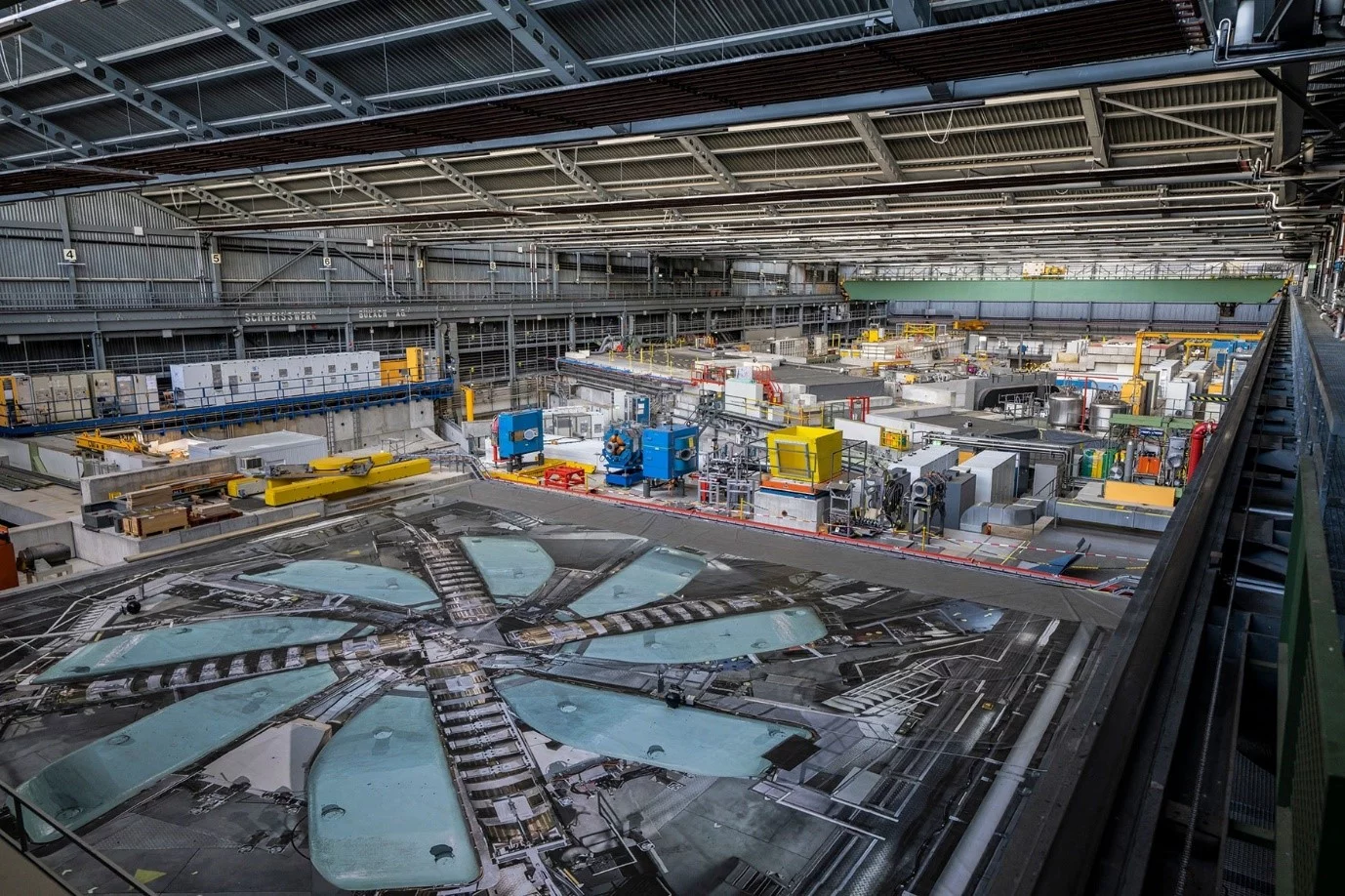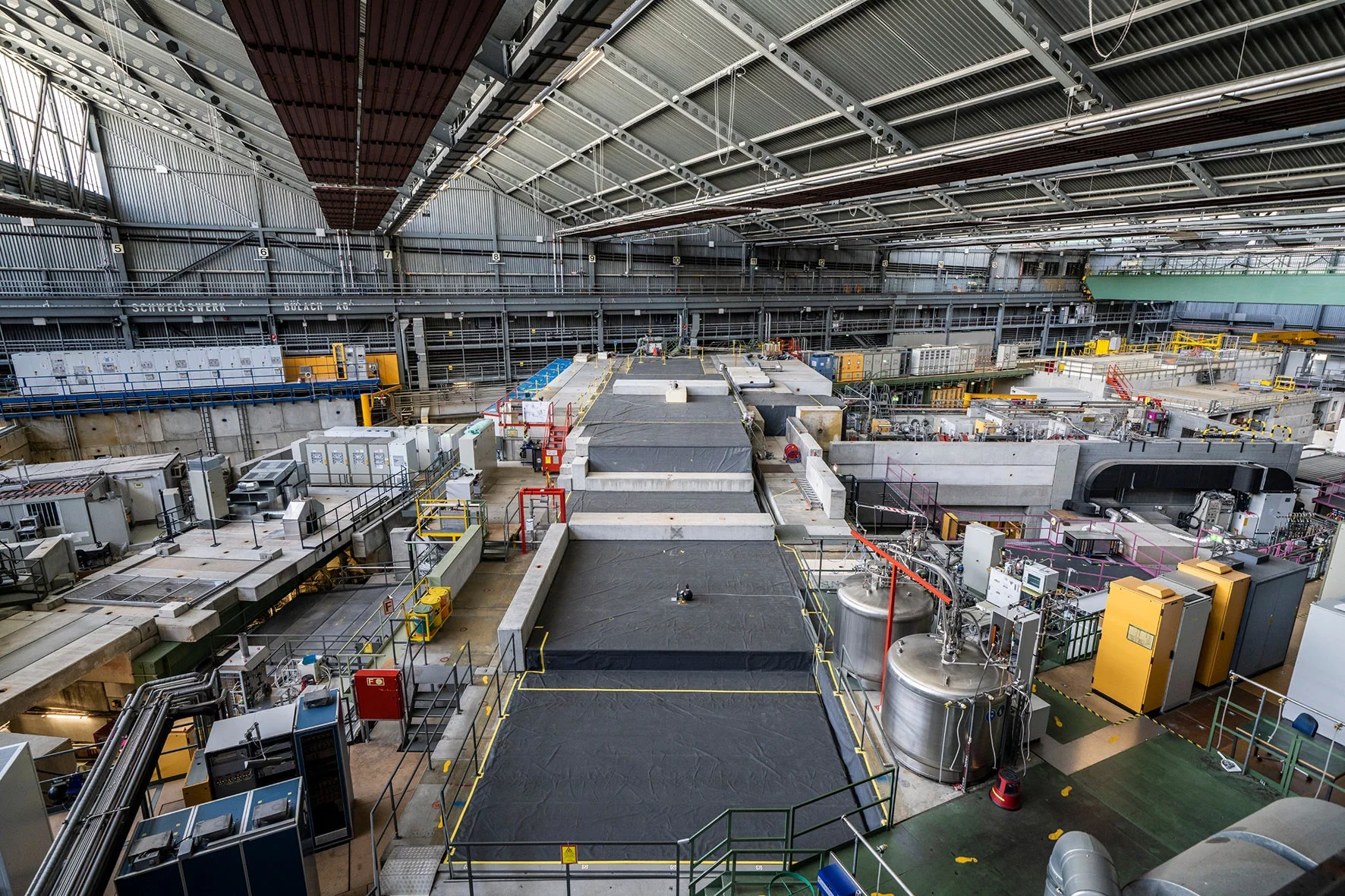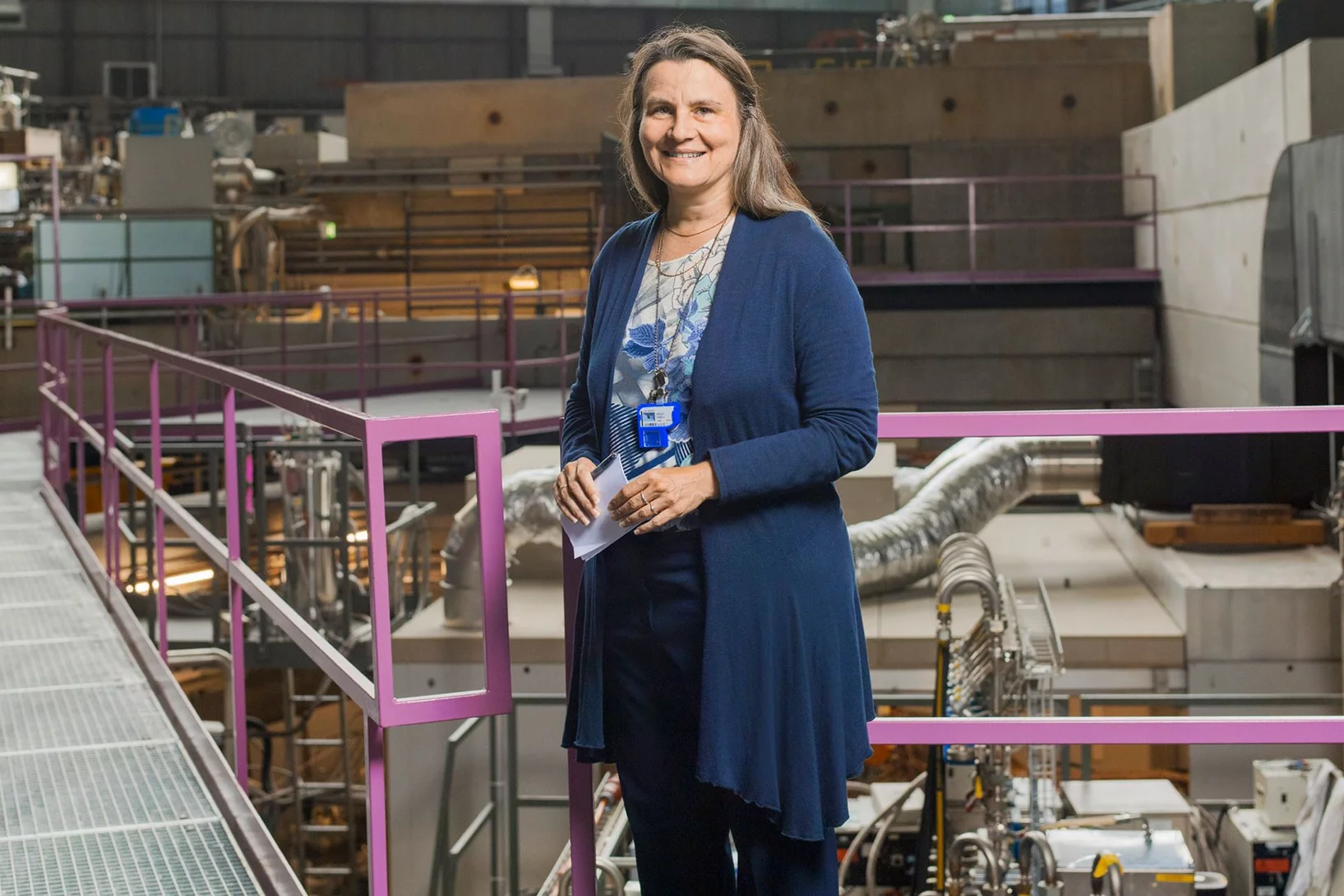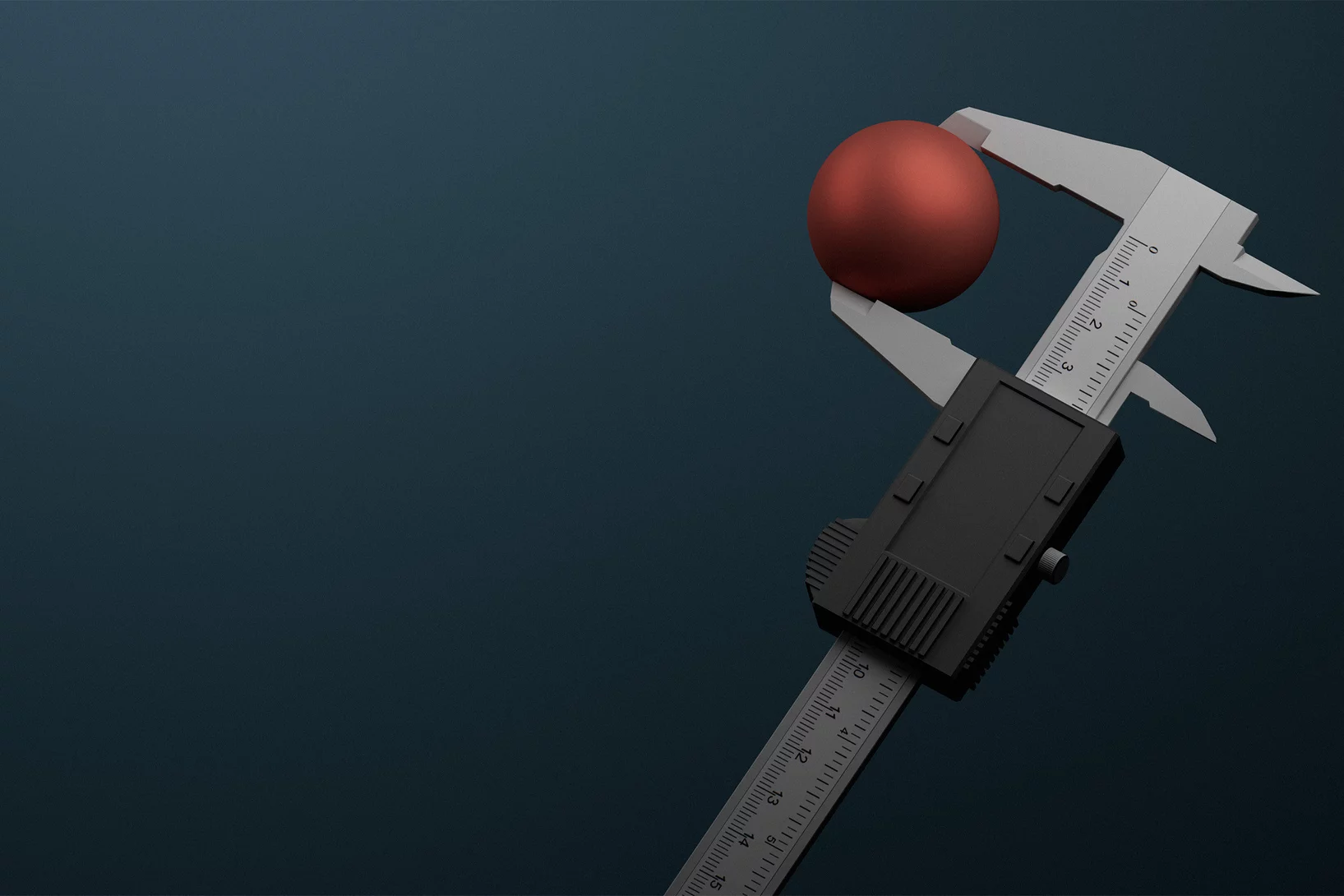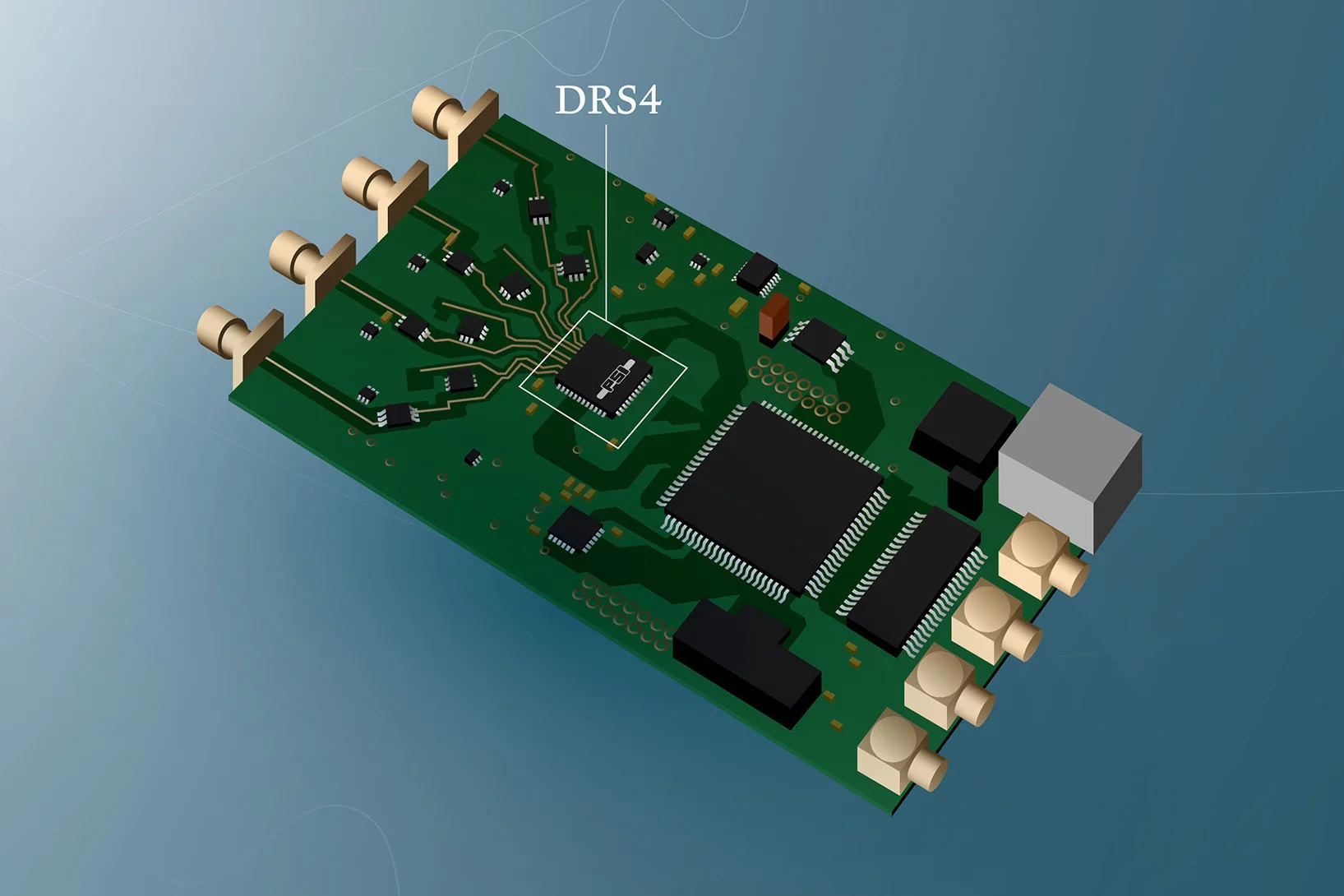Particle accelerators are central components of PSI. They help researchers obtain particles that are used for fundamental physical experiments. With particle beams made up of pions, muons, neutrons, protons, and electrons, researchers are investigating how our universe is constructed. The Swiss research infrastructure for particle physics – CHRISP – enables them to determine fundamental natural constants with the greatest precision and to look for deviations from the current standard model of particle physics. They also develop and test detectors for experiments at PSI, for space missions, and for the European research center CERN in Geneva.
Since 1974, the high-intensity proton accelerator HIPA has been the basis for a particle factory that helps to keep fundamental research running at PSI. HIPA and another proton accelerator called COMET form the basis for one of the five large research facilities at PSI: the Swiss research infrastructure for particle physics CHRISP. A total of around 400 researchers work at seven different experimental stations for particle physics at this large research facility.
Protons are the positively charged building blocks of atomic nuclei, and they in turn consist of three basic building blocks called quarks. At PSI, protons from HIPA are made to collide with two targets, rotating rings made of carbon, at 80 percent the speed of light. This creates pions, which are made up of two quarks. These in turn decay into muons. The latter are similar to the electron but are roughly 200 times heavier. Originally, particle physics at PSI mainly studied pions; today significantly more experiments are carried out with muons. Thanks to continuous further development, the facility at PSI is the world's most powerful pion and muon source for particle physics.
Thin and thick targets
The proton beam from the HIPA accelerator first hits a graphite wheel that is only five millimetres thick. It bears the designation "M" for "mince," French for "thin." In collisions with carbon nuclei of the graphite, the fast protons generate pions, which decay into muons after an extremely short time. The pion-muon beam is guided, with the help of magnets, to a first measuring station called πM1. Here the energy of the particles can be adjusted more precisely than at any of the other experiment stations. Initially, measurements here were mainly carried out on pions. Since 2018, an experiment called MUSE (Muon Proton Scattering Experiment) has been running in πM1. With this, an international research collaboration aims to determine the proton radius through simultaneous measurement of the scattering of electrons and muons on hydrogen. An earlier experiment conducted at PSI by the CREMA collaboration (Charge Radius Experiment with Muonic Atoms) had revealed a clear discrepancy between measurement results and what was then the established value for the proton radius.
After the graphite wheel “M,” the proton beam hits a second target: the carbon target “E.” The letter stands for “épais,” French for “thick” – this target is 40 millimetres thick. Here significantly more pions and thus more muons are produced than on the M target, and more experimental areas can run simultaneously, including πE1 and πE5, where different particle physics experiments are carried out. At πE5 there are mostly muons with low energies. This is where researchers have access to the strongest beam. The CREMA collaboration also conducts its laser spectroscopy experiments here. Other international teams are looking for “new physics” with which they could either complete or redesign the established but imperfect standard model of particle physics.
For example, they are seeking evidence of the decay of muons, which according to today's standard theory should not exist. With the so-called MEG experiment, they spent years searching for an event in which a muon decays into a positron, that is, the positively charged antiparticle of the electron, and a light particle, a photon or gamma – in vain. Thanks to this null result, some theories could already be excluded as extensions of the standard model. An apparatus ten times more sensitive, MEG II, and another experiment called Mu3e are to carry on the quest. With Mu3e, the researchers hope to discover a never-before-seen decay of a positive muon into two positrons and one electron.
In the future, both the quality and the intensity of the muon beams should be further enhanced. In feasibility studies, researchers are investigating the cooling of muon beams with muCool in order to achieve a million times higher beam brilliance and, with HIMB (High Intensity Muon Beams), the replacement of target station M with two new muon beams a hundred times more intense.
The ultracold neutron source UCN
Particle physics also makes use of a spallation neutron source. Since 2011, fast protons from the HIPA accelerator have been hitting a lead target and knocking out neutrons, the uncharged building blocks, from the atomic nuclei. These are then slowed down so much, with heavy water (deuterium dioxide, D2O) and solid deuterium (D2), that the experts speak of them as ultracold neutrons, UCN for short. They are stored temporarily in a two cubic metre container, which is coated on the inside with diamond-like carbon, and from there they are sent to the experiments. The ultracold neutrons can be stored, manipulated, and observed for a few minutes. That is why they are especially well suited for particle physics experiments. In this, the UCN source at PSI is a world leader.
It is the most powerful source internationally for generating as many such ultracold neutrons as possible for particle physics experiments. With this, too, the researchers are looking for phenomena that should provide clues to an expansion of the standard model. You might want to prove, for example, that the electrically neutral neutron has an asymmetric charge distribution inside it, a so-called electric dipole moment. According to the standard model, the neutron has an electric dipole moment that simply cannot be measured by today's means. And in fact, all previous experiments have yielded a null result. The most precise measurements were provided by PSI researchers and other Swiss institutes with an international research collaboration at PSI in February 2020, in an experiment called nEDM (for neutron and electric dipole moment). A new experiment called n2EDM should now deliver a result that is ten times more precise.
The proton irradiation facility PIF
Particle physics at PSI also includes the PIF proton irradiation facility. It receives the particle beam from the COMET cyclotron, which was developed for medical applications. On weekdays, cancer patients are treated at PSI with protons from this compact ring accelerator. The particle beam is continuously switched between four different treatment stations. Strict safety requirements make medical operations impossible at night and on weekends. Yet because the accelerator can run problem-free around the clock, the protons are then guided to another area where PIF is located. Here researchers irradiate, among other things, electronic components for space missions.
Protons ejected from the sun are constantly present in the upper atmosphere of the earth and in nearby space, and they can seriously damage electronic components. Satellite builders have to make sure that all components can remain functional under irradiation, a capability experts refer to as radiation hardness. For that reason, the European Space Agency ESA has been collaborating with PSI for many years. Practically all ESA space missions, such as the Rosetta comet probe or the Gaia space telescope, have used PIF to test their components and payloads.
Another major PIF customer is the European research centre CERN, whose LHC, the world's most powerful particle accelerator, places great demands on the radiation hardness of electronic components. While in particle physics the utilisation of other measuring facilities is usually made available free of charge for selected research projects, PIF sells the majority of its beam time to institutions and companies. But PSI researchers themselves also use PIF for the development of detectors. Together with Swiss and international partners, they built the pixel detector that is at the core of the CMS experiment, one of the two large-scale experiments at the LHC. And on board a Chinese space station the detector called POLAR, built with significant PSI participation, has detected gamma-ray bursts from distant space. Radiation monitors developed or tested at PIF also ensure that devices aboard many satellites are switched off in good time if the radiation level becomes too high. In addition to the protons from PIF, pions or electrons generated at the other CHRISP measuring stations can also be used for radiation tests.
Further information
- Other research with neutrons
An overview of neutron research - Other research with muons
An overview of muon research - The PSI proton accelerator
Source of fast protons for SINQ
News
„IMPACT is very important in terms of international competition“
Daniela Kiselev talks about the upgrade planned at PSI's proton accelerator facility.
Hunting for the radius of a proton
0.000 000 000 000 840 87 (39) metres – scientists working at PSI have come up with this astonishing figure for the radius of a proton.
What can’t be bought, we develop ourselves
Many components for the experiments the researchers at PSI just develop themselves.

